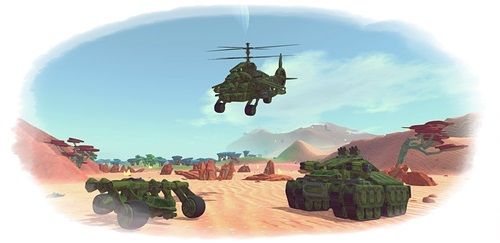
So, you are a combat oriented builder who is concerned and or curious on what makes a tech ideal for combat? Well I am here to give you the information to understand some kinks on how to make a robust tech for all situations. A Tanky Combat 101 series.
Key:
HP: Hull Points/Hit Points
EP: Energy Points (HP for shields)
What makes a tech very sturdy and how do you “tell”? Well the answer is simple, go into a war-zone of 2 timed battle missions (“wave of bullies” type missions) and see if you’re single tech can be victorious without retreating. Ok no not really but that’s a good test.
1) System independency
Batteries are a common mistake in this category. You make a massive power core but once that core becomes dead weight, you go up in a roditic chemical explosion. It is best to avoid relying on a single system to be functional. If a tech gets inside you’re shields and lands a good shot, ka-boom. If you’re shields go down, ka-boom. With airships, if you’re source of lift is too damaged, SMASH! At least the airship can still shoot when grounded though… Can’t say that for anti grav. Instead of having these forms of dependencies (except for airships that will be talked about in another part of tanky Combat 101) it would be best to have backups or a plan B.
2) Redundancy
System independency can easily be done with redundant systems, having more than enough of something in case you lose one of those things. This applies to cabs and the more cabs you have hidden in the hull, the more tanky you are. Same goes for batteries, if a battery is destroyed prematurely (ka-boom), it loses its charge, the worst thing you want on a tanky tech is its battery core to explode before it loses all power. That means you lost potential HP that could have been kept, repair bubble healing or shield… shielding. If you spread batteries out in many small cores or in the hull, the destruction of one will not cause a massive chain and destroy all your power (and you). Avoid making battery spines and hull, make small battery cores instead.
3) A Plan B defense
With redundant systems, a plan B is always a good plan to have. We all love our shields, a massive volley comes in, smacks on the shield, and your paint is still as good as new. But, when in a tight situation, relying on shields can be a massive mistake. How so? Well shields are a big target, we all know kinetic weapons don’t aim well (unless mods), but they don’t need to aim well and utilize their bonus damage when attacking a massive shield. Kinetics does bonus damage to shields, draining EP much more than a tsunami of cannon shells and missiles.
If you saw the TerraTech naval warfare turning round 1, at the 1:28:00 mark, we have two very equal matched ships fight each other for a long while. Both ships are shield dependent techs, having massive battery cores and shields. But, throughout the match, the Yamato had massive waves of kinetic weapons bombard the Competitive Battle’s (CB) shields and in the end the extra damage to EPs from those guns caused CB’s shields to come offline first even though CB had heavier missile hits.
This is a perfect example of shields maybe not being the best all going option. Instead of just adding more batteries to absorb the bonus EP damage, add some extra hull integrity and armor, by integrity, I mean the ability to withstand damage and still keep the tech together, kinetic weapons have reduced damage to armor, and I believe its x0.75. When shields will get shredded quickly by a kinetic based tech, armor will stand strong so in the event that shields are gunned down, armor will provide a 2nd phase to the boss fight. This is an example of a plan B co-operation. Shields are the first form of defense, then armor and hull, effectively, if you build your tech well with armor and batteries, the shields are only 1/4 the tech’s HP! For reference to visualize: the shields go down after 1 minute, but 4 minutes latter you’re tech only now has sustained heavy damage and is encountering structural failure.
That’s quite a long time when you think about it. If you spammed batteries to extend the shield time, you may get to 3 minutes, then explode in a roditic chemical explosion and die instantly. It’s about the compatibility of the forms of defense, not how strong one defense is. This also applies to repair bubbles which will be talked about in another edition of Tanky Combat 101.
-End-
This concludes (a bit abruptly) the basics of how to create a robust tech for all situations (basics). This is my first guide so it may have some holes due to inexperience that will be patched over time. This is also a simplified guide, more advance ones will be around, for now, this gives you the basics and general concepts of a robust tech that will work in all situations.
Credit to VERTU